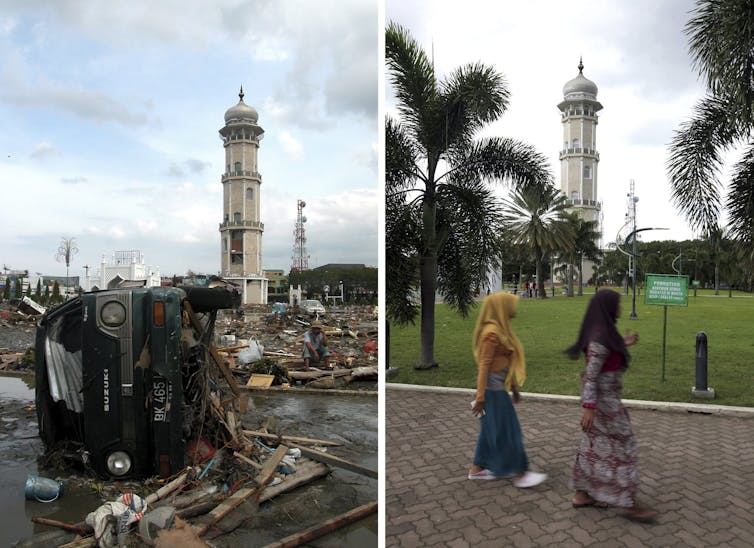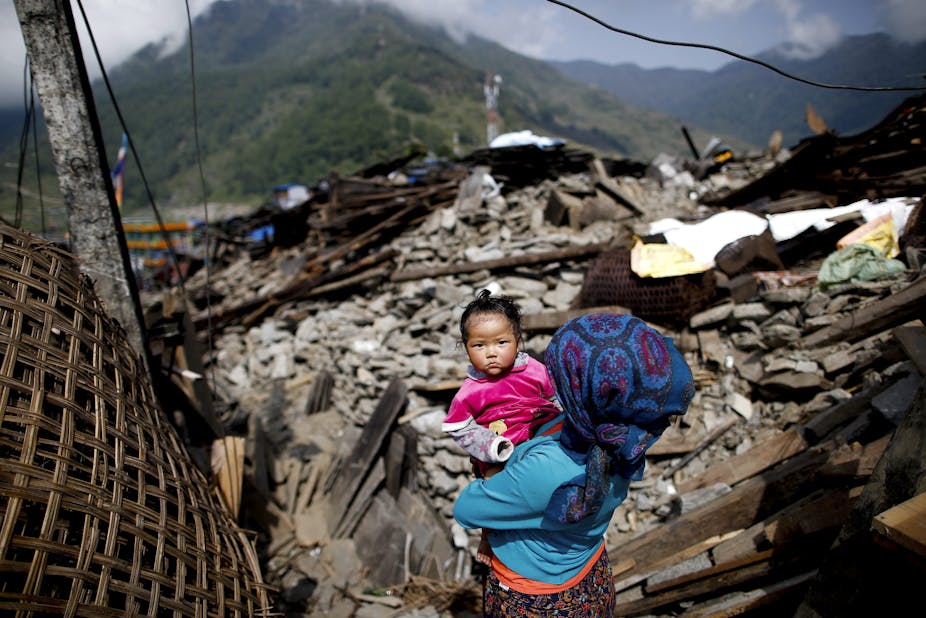David Gellner is surely correct in observing that local politics in Nepal will hinder relief and recovery efforts following the April 25 earthquake and its aftershocks. But look at it the other way around. Could the disaster help to resolve political problems in Nepal? This depends on how we go about it.
Real-life events are tremendously effective levers of change, as illustrated by Howard Gardner in his world-altering book Changing Minds. The Second World War changed us all, because great statesmen, inventive scientists and millions of people passionate about freedom responded to its challenges.
The situation in Aceh after the tsunami in late 2004 was no more conducive for relief and recovery than Nepal is today. There was an anti-government armed rebellion, the governor was caught in a corruption case, the economy was eroding, civil rights were largely ignored and the people were oppressed. Yet the tsunami brought peace, a new basis for democracy and at least some basis for economic recovery.
Sri Lankans saw how Aceh managed to lever change, and much effort was put into trying to learn from it. Yet it took years and great suffering before conflicting parties decided to listen to the voice of nature and bring about the change it called for.
In Haiti, everyone was so focused on relief and recovery after the 2010 earthquake that the voice of nature to enact change went largely ignored. Will Nepal be able to listen to what the earthquake is telling them?
Howard Gardner provides us with six other levers of change, which I will return to later. They are:
- Reasoning which provides arguments why reform should take a particular direction.
- Research to assure that whatever we propose is sensible, measurable, applicable and achievable.
- Resonance which calls all who share the same values principles and objectives to speak up on behalf of good governance and good management.
- Re-description whereby we continually seek new words, media and places to present our case for change, so that all can understand and be persuaded.
- Restraints whereby listening to opponents enable us to find new reasons, new research, and more re-descriptions.
- Resources and rewards to enable and motivate people to change.

Back in Aceh, not everything worked out. Within a couple of years, the people wanted to forget the tsunami in the false belief that they could move on without succumbing to its impelling power to change.
Leaders were preoccupied with leveraging their own political power more than leveraging everything for the common good. While we are amazed at the changes that did occur in Aceh, at the same time it is disappointing that so many opportunities were missed.
What can Nepal learn?
What lessons can be learnt from Aceh, and elsewhere, for the people of Nepal? Can this disaster be used to bring fundamental change and help people not to lose sight of the potential for change along the way?
Firstly, we must recognise that recovery is a shared entity. Anyone looking at scenes from Nepal already has an image of it in their minds. They will be tempted to reject this holistic concept for lists of things to do. But it is the shared entity of recovery that holds those who come to help together with the people of Nepal.
According to UN principle, the government of Nepal is responsible for relief and recovery, but it is the Nepalese people who hold sovereignty. It is no easy matter to turn a shared entity into formal arrangements, and this must be an ongoing concern for all who participate and provide help.
A political problem, a political response
Thus our first recognition is that disaster recovery is a political affair. As much as we want to get on with managing the disaster, we firstly must govern the way in which parties position themselves, and how the rights of people are assessed and protected throughout the long, dynamic process.
My first hope for Nepal is that a coalition of nationals and internationals will help develop an effective political framework to lead the recovery efforts, streamline the communication of needs and relief efforts, and work towards building the new society.
We should not shrink from working on an equivalent to the Helsinki peace process that stabilised conflict in Aceh and a parallel to BRR, which led those working on reconstruction. It is important to find leaders in Nepal like Martti Ahtisaari, Yusuf Kalla, Kuntoro and Irwandi, who helped mediate the recovery and peace process in Aceh.
We can also learn from Sri Lanka, Myanmar and Japan where building the political framework for recovery was hard and slow, but ultimately successful.
Support for business and professionals
Secondly, I recognise that recovery is dependent on both livelihoods and business. When the local business community is destroyed, the international community needs to support and rebuild it, so as to foster a strong and resilient economy. The business community will be there long after the humanitarians have all gone home.
The two sectors most needed in Nepal now are banking and construction. I hope that banks will speed up financial flows, reduce cash dependency and help with the shared accountability. I hope that there is a Disaster Resources Partnership of international and local contractors to ensure the highest ethical standards and commitment to recovery, where India and Indonesia have the appropriate models.

Thirdly, I recognise that professionalism during disaster recovery is not the same as professionalism in normal times. Humanitarians are now mostly professional, and there are now professional groups for disaster logistics and crisis informatics.
Paul Steinfort of Melbourne has developed concepts to improve disaster recovery project management. Others are working on disaster quantity surveying (cost engineering), town planning, and general medical practice in times of disaster.
Despite this progress, some professions are yet to work out how they need to alter their practice when working in disasters. Accountants, financial managers and politicians are such professions. My hope is that professionals who go to help Nepal will understand how their professionalism needs to be redefined to respond to disasters.
Lastly, I recognise that any public accountability systems that were working before the disaster have been damaged by it. The systems of accountability now need to be rebuilt. And my hope here is that Nepal will start building its accountability systems now and continue until all are held accountable for their role in recovery, when it is fully achieved.
It is essential that the leaders in Nepal take the time to recognise and understand these crucial aspects of disaster recovery. They need to work on developing their version of Howard’s levers of change – reasoning, research, resonance, re-description, restraints and resources and rewards. This will enable the people of Nepal to turn their disaster into the lever of change that nature has presented to them.

